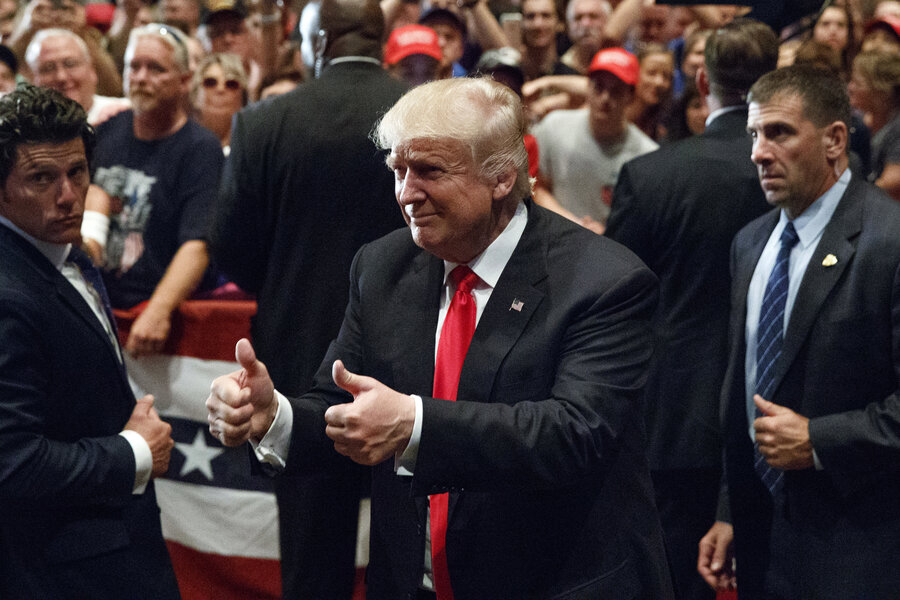Donald Trump’s tax proposals could double the trade deficit
Loading...
Republican presidential contender Donald Trump often expresses dismay about the US trade deficit, which he ties to the loss of good paying middle class jobs. The issue is more nuanced than Mr. Trump suggests, and his plan to impose giant tariffs on China and other countries won’t create jobs or even necessarily reduce the trade deficit. Even more damaging, his tax proposals could double our trade deficit from $500 billion to as much as $1 trillion at current income levels.
Economists have long recognized that there is a relationship between trade deficits and budget deficits. The country must produce or import everything it consumes. In particular, if government spending and business investment exceed tax revenues and domestic saving, the excess must be imported.
If domestic saving and investment don’t change, then every dollar increase in the budget deficit would translate into another dollar of trade deficit. That is the “twin deficits” hypothesis. However, government policy can change levels of saving and investment. For example, households may choose to save part of a net tax cut. Or more government borrowing may push up interest rates, which would crowd out some private investment. Both effects would tend to offset some or all of the increase in the budget deficit.
In the 19th century, economist David Ricardo posited that private saving might offset deficit increases dollar for dollar if far-sighted individuals save to prepare for the inevitable future tax hikes caused by those deficits. Ricardo himself didn’t believe that people behave that way and the proposition isn’t supported by evidence, but it’s a theoretical possibility.
There is, however, evidence that the two deficits move together. A careful study by two IMF economists estimated that, on average, an additional dollar of budget deficit translates into 60 cents of additional trade deficit. The Tax Policy Center estimated that Trump’s initial tax plan would increase budget deficits by 2.8 percent to 5.5 percent of GDP between 2017 and 2026. That would raise the trade deficit by 1.7 percent to 3.3 percent of GDP. Thus, by 2026, trade deficits could be roughly double their recent levels (2.7 percent to 3.0 percent of GDP between 2011 and 2015).
Trump has since withdrawn his original tax proposal and now suggests he may adopt some version of the plan House Speaker Paul Ryan proposed last June. Trump II, as we understand it, would still add trillions to the deficit because it would cut tax rates dramatically, especially on business income, without significantly broadening the tax base or cutting spending. (We plan to publish updated estimates of the Trump plan, including macroeconomic feedback effects, in mid-September.)
Trump advisors say that his new tax plan remains a work in progress. If Mr. Trump really cares about the trade deficit, he should start with a fiscally responsible tax plan.
This story originally appeared on TaxVox.







